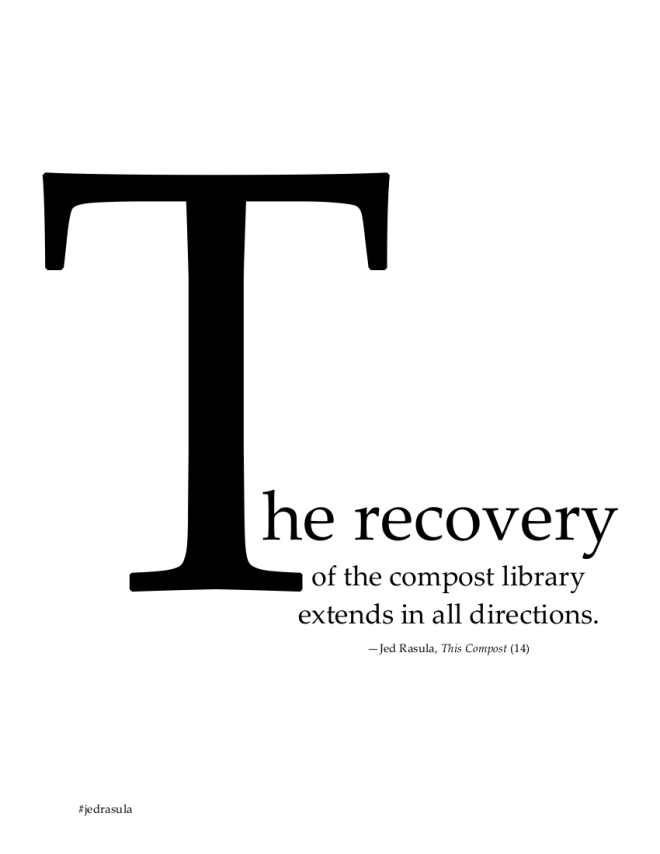It’s a bad idea to turn your blog into a book. And, looks like that’s not going to stop me. About a week ago, revisiting my first posts, I realized there’s a coherence to what I’ve been up to here, and this blog began to look like the foundation of another project.
Gonna take a few years to do right. And some study – of desktop publishing software, and of typesetting and manuscript traditions, European, Asian, South American, at least. I’m pumped. Here’s the prefatory note I knocked out this morning.
About this book
It began as a blog. You can read a rough draft of it at theartofcompost.com.
I’ve translated my blog here into a chimeric bookish form. Chimera, as in hybrid, collage, a robe of patches.
The Chimaera of Lycia in Asia Minor was a lion in front, a goat in the middle, a snake at the rear, said Homer, and breathed fire.
“This old plum tree is boundless. It forms spring; it forms winter. It arouses wind and wild rain. It is the head of a patch-robed monk; it is the eyeball of an ancient buddha. It becomes grass and trees; it becomes pure fragrance. Its whirling, miraculous transformation has no limit.” Dōgen.
The lion of it is the serial poem, as described by the poets Jack Spicer, Robin Blaser. Like a blog, it’s written in sequence, with little or no looking back – Orpheus, rampant, headlong.
The goat, which eats everything, is the commonplace book, where one tends to a moving picture of one’s mind by gathering and arranging discoveries – quotations, letters, poems, recipes, tables of weights and measures, &c. It tends toward miscellany, scrapbookhood; very like a blog.
And the serpent, whose mind is the onset of the idea of form, a marriage of line and curve, so that it moves forward by twisting side to side, is the fashioned page – whose history I have ransacked. Each page here is set in homage to or mimicry of some published surface, its visible arrangement, i.e., its deployment of attention.
With a special place for late medieval manuscript and early modern European typesetting practices, columns of glosses, embankments of notes. Like blog posts, with their frames and hyperlinks, these surfaces tempt attention off its chosen path, lateral movements to a periphery or through doors behind which the unseen.
Nothing says you have to read it in order. Nothing says you have anything.
That last sentence kicked me in the teeth as it came out. Clarified for me that the book will be, not about exactly, but on the terrain of, dispossession. Here’s the first page

Working title, A Compost Commonplace. Stay tuned, oh do!


One thought on “From blog to book”